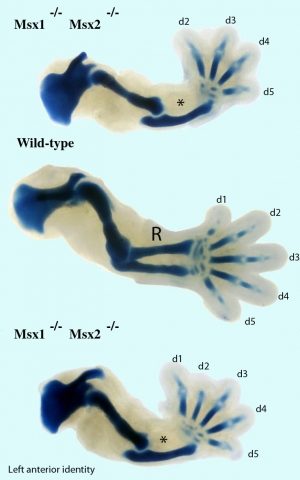About
In vertebrates, morphogenesis first involves patterning of embryonic fields, i.e. their partition into different territories characterized by specific expression programs. This leads to local changes in cell physiology that promote concerted proliferation, oriented cell division, apoptosis, migration, differentiation, all functions that contribute to growth, the motor for morphogenesis. In the limb bud, Msx1 and Msx2 are expressed both in the apical ectoderm and underlying mesenchyme, according to dynamic expression patterns. Mutation of both Msx genes results in a complex limb phenotype that ranges from oligo- to polydactyly, but always leads to the loss of structures with an anterior identity (pollex/radius or hallux/Tibia). On the contrary, a hypomorphic combination of mutant alleles systematically results in anterior outgrowth and polydactyly. We are analyzing the changes in cell physiology associated with this outgrowth, and the differences in transcriptome between normal and mutant limbs to pinpoint the genes that may underlie changes in cell behaviour.

